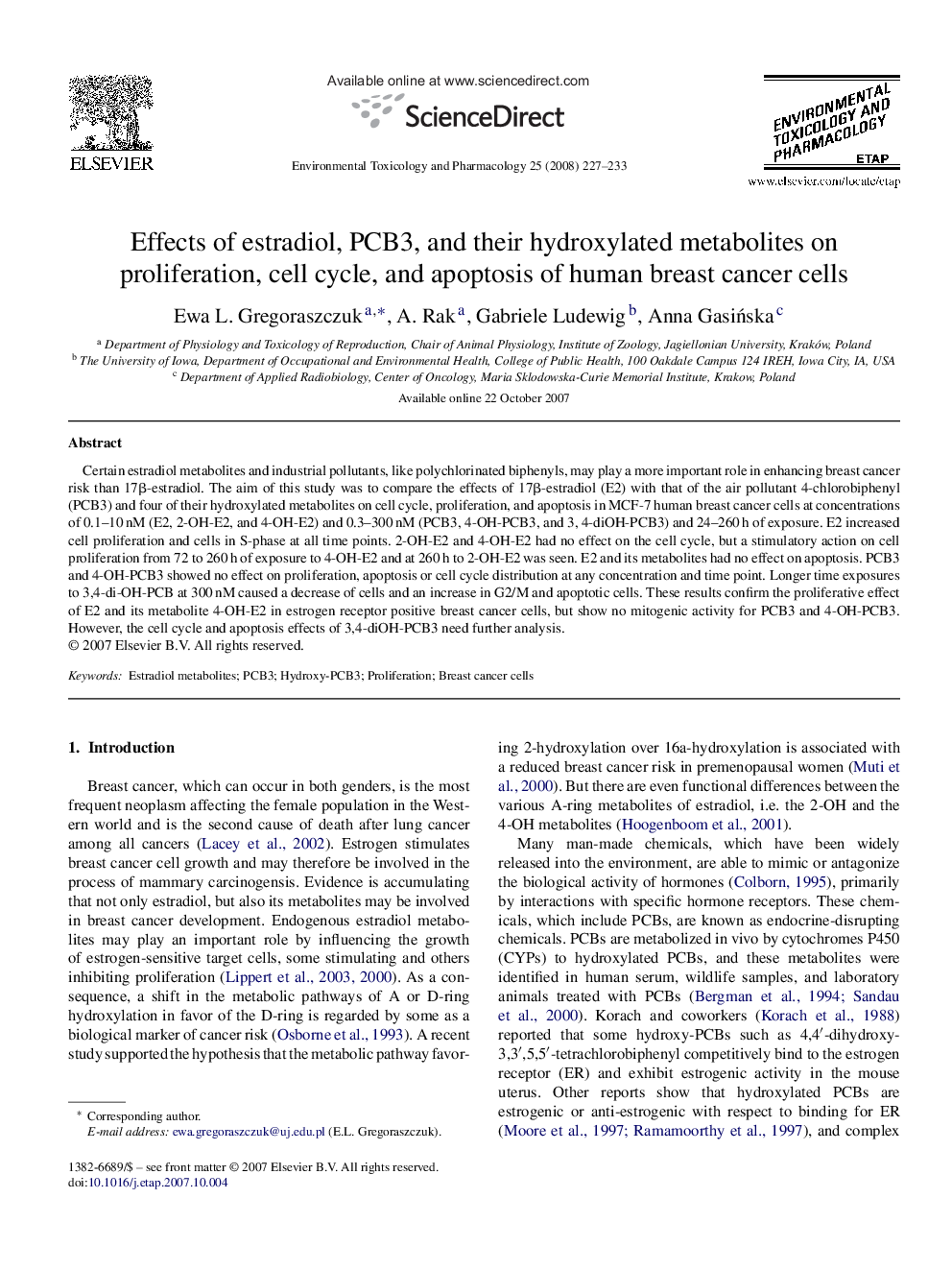| Article ID | Journal | Published Year | Pages | File Type |
|---|---|---|---|---|
| 2584398 | Environmental Toxicology and Pharmacology | 2008 | 7 Pages |
Certain estradiol metabolites and industrial pollutants, like polychlorinated biphenyls, may play a more important role in enhancing breast cancer risk than 17β-estradiol. The aim of this study was to compare the effects of 17β-estradiol (E2) with that of the air pollutant 4-chlorobiphenyl (PCB3) and four of their hydroxylated metabolites on cell cycle, proliferation, and apoptosis in MCF-7 human breast cancer cells at concentrations of 0.1–10 nM (E2, 2-OH-E2, and 4-OH-E2) and 0.3–300 nM (PCB3, 4-OH-PCB3, and 3, 4-diOH-PCB3) and 24–260 h of exposure. E2 increased cell proliferation and cells in S-phase at all time points. 2-OH-E2 and 4-OH-E2 had no effect on the cell cycle, but a stimulatory action on cell proliferation from 72 to 260 h of exposure to 4-OH-E2 and at 260 h to 2-OH-E2 was seen. E2 and its metabolites had no effect on apoptosis. PCB3 and 4-OH-PCB3 showed no effect on proliferation, apoptosis or cell cycle distribution at any concentration and time point. Longer time exposures to 3,4-di-OH-PCB at 300 nM caused a decrease of cells and an increase in G2/M and apoptotic cells. These results confirm the proliferative effect of E2 and its metabolite 4-OH-E2 in estrogen receptor positive breast cancer cells, but show no mitogenic activity for PCB3 and 4-OH-PCB3. However, the cell cycle and apoptosis effects of 3,4-diOH-PCB3 need further analysis.
